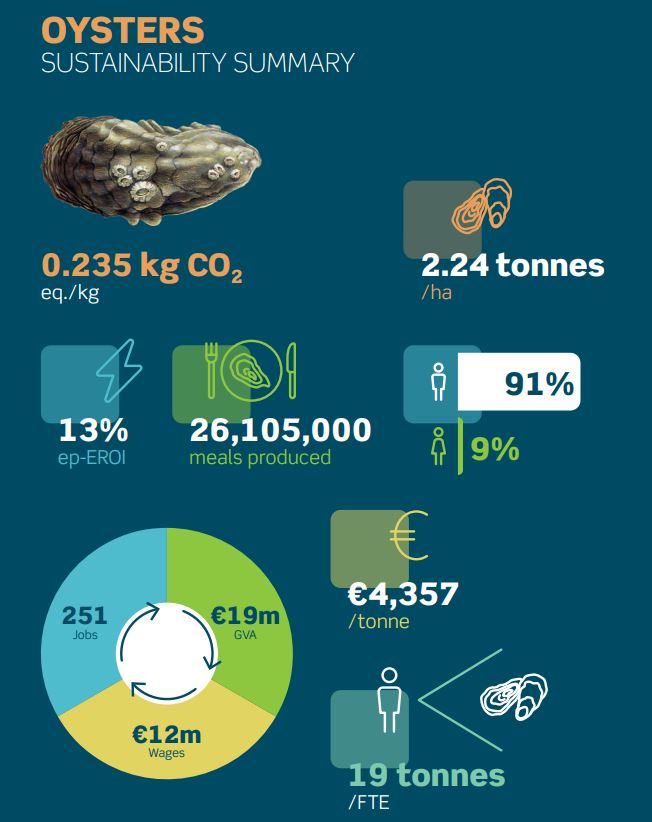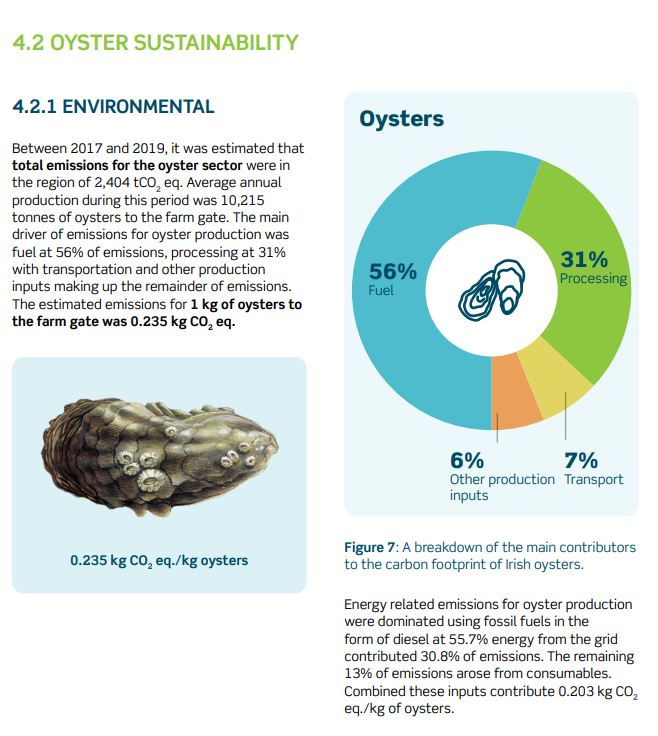BIM has released its inaugural sustainability report which provides key information on the sustainability performance of the Irish aquaculture sector.
More than 154 million meals are produced each year by the aquaculture sector, according to the BIM Sustainability Report. It shows that aquaculture is a low carbon sector that produces a large amount of food per unit of area used.
The report provides a baseline on the sustainability credentials of the salmon, rope mussel and oyster segments across four pillars – environmental, economic, social and innovation.
Report author Dr Ronan Cooney said the sustainability report will help build an important dataset for industry and policymakers, while also providing accessible information which stakeholders can use in their own sustainability plans.
“With the global population expected to increase to nine billion by 2050, demand for seafood is expected to increase by 50% in 2050,” said Dr Cooney. “Much of this demand is expected to be met by aquaculture with a drive to promote greater efficiencies in food production processes and food security.
“This inaugural sustainability report provides valuable insights into how the Irish aquaculture sector is performing from a sustainability perspective.
“BIM has developed this report as tool that industry can use to assess and communicate their sustainability performance and look at ways to improve and progress, ensuring it is well placed to meet future production demands.”
Data from the report, which uses 2017 to 2019 as baseline years, shows that aquaculture products are resource efficient with low inputs required to produce good quality products.
“The report shows that the salmon, rope mussel and oyster segments have good environmental performance with some variance within years,” said Dr Cooney.
“Economic results were mixed with Gross Value Added (GVA) decreasing for some sectors while the sales value per unit area increased.
“Social indicators performed well in terms of multiplier effects for GVA, employment and wages.
“Challenges identified include an ageing worker population with low levels of recruitment and gender diversity. However the sector has embraced innovation to a high level and has adopted new forms of organisation and process controls.
“From an environmental perspective, each of the segments is performing well with some variance within years.”
The report and its results underpin the National Strategic Plan for the Sustainable Development of Aquaculture.


